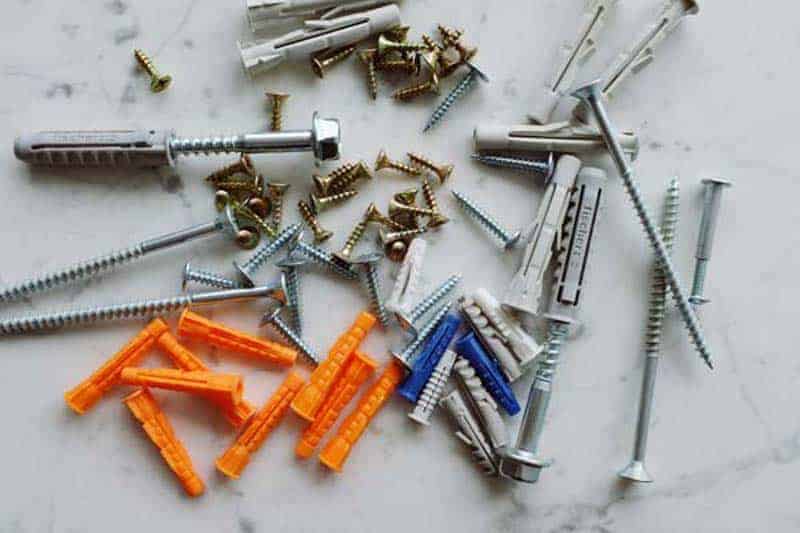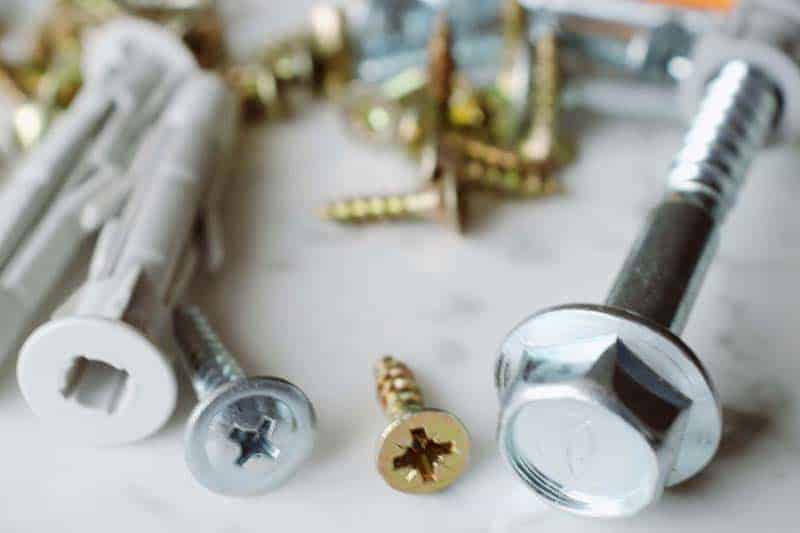You might not consider the possibility of your artwork, shelves, and decor being too heavy and substantial for your drywall… until it falters and you’re left with a serious DIY job on your hands. If you want to be safe and ensure that your drywall can handle the weight of everything you want to attach to it, you’ve come to the right place.
Having said that, how much weight drywall can hold is not as simple as a flat number. Instead, there are a few different factors to consider before you can come to an accurate estimate of how much weight you can burden your walls with.
The amount of weight that your drywall can hold largely depends on the mounting equipment you opt for.
On its own, drywall can only hold items weighing a few pounds, which is why mounting accessories are your best friend when decorating drywall.
Below we’ll be looking at the different types of mounts that you could use depending on the size and weight of the pieces that you want to hang from your drywall.
Different Types of Anchors
Anchors are used for giving your drywall a helping hand when hanging something particularly heavy or fragile. For example, if you have a heavy frame that you think might be too heavy for a simple nail in the wall, an anchor can be placed to prevent it from falling and smashing.
There are four main types of anchors to choose from, each of which varying in the weight that they can help to hold. Let’s take a look at these four options so that you know which is the correct option for your needs.
Drywall plugs
Drywall plugs are the smallest of the available anchor options and they’re designed to hold from five to 25 pounds in weight. The larger the drywall plug is, the higher the amount of weight it can hold. These are best used for smaller items such as picture frames and towel racks, as long as it’s not too heavy.
Drywall plugs are often made of plastic and will need to be hammered into a hole in the wall. You’ll need to drill this hole to the correct size so that the drywall plug cannot move around or slip out under the strain of the additional weight. This drilled hole is called a pilot hole.
Molly bolts
Molly bolts are used to hold items from 25 to 50 pounds, and they can also be used in ceilings to hang things vertically.
For instance, a small lighting fixture can benefit from molly bolts to ensure that it doesn’t become loose. Having said that, you should avoid using molly bolts on anything over 10 ounces when it comes to the ceiling.
Molly bolts are often a more permanent solution and cannot be removed after you’ve installed them. For this reason, molly bolts are often only used on permanent fixtures such as lights and smoke alarms.
It’s very important to get the correct size of the molly bolt to ensure that the effectiveness is not compromised.
Threaded anchors
Threaded anchors are somewhat easier to install than drywall plugs because they don’t require a pilot hole to be made beforehand.
They can hold up to 75 pounds in weight, so they’re better for medium-sized items such as shelves and heavy mirrors.
Threaded anchors are often made of metal and therefore they’re much more durable and sturdier than drywall plugs, so if you’re worried about the security of your anchor, we would advise you to opt for a threaded anchor.
Toggle bolts
Toggle bolts can either be made of plastic or metal, with the latter being one of the strongest anchors available to use. Plastic toggle bolts can hold up to 20 pounds, whereas metal alternatives can hold up to 100 pounds.
While toggle bolts are the best option for ceiling installations, it’s important to remember that they can only hold up to 15 pounds of weight when used vertically.
Do not get confused with the maximum weight for walls and ceiling, as you could put both yourself and your items at risk.
Toggle bolts are inserted into a pilot hole and then left to open up behind the wall. This gives the additional security for heavier items, so if you’re worried about the safety of a heavy item we would always advise you to use a toggle bolt. Toggle bolts can be more difficult to install but the added reliability makes the hassle worth it.
Small Anchors
If none of the above anchors sounds like the correct option for you, some smaller anchors can be used for specific items. If you have a small item that you don’t think you need to install an anchor into the wall for, perhaps we can shed some light below.
Hooks
Hooks still need to be installed into the wall, but they leave a much smaller hole that can easily be spackled and covered if you ever needed to hide it.
Hooks are very helpful for paintings and mirrors, and they can come in an array of sizes to ensure the correct size for all of your hanging needs. The heavier item you want hanging, the larger the hook will need to be.
Adhesive Strips
Adhesive strips are a great alternative to anchors that need to be installed into walls. High-quality adhesive strips will attach to the wall to create an almost unbreakable bond, and they can be removed from the wall without damaging the paint or wallpaper. These are very popular when it comes to rented apartments.
Adhesive strips come with different maximum weights that they can hold, so make sure that you check the weight limit for the brand that you’re going to be using. Make sure that you follow the instructions to maximize the efficiency of the strips.
Alternatives to Anchors
Anchors are great hardware that can help you in a wide variety of situations, but they can only help to hold up so much weight on your drywall.
If you don’t think that any of the options above are viable for you, then you can use the wall studs or ceiling joists that are behind your drywall. Below we’ll look at these alternatives to anchors and how you’d go about finding them.
Wall Studs
Wall studs are beams of wood that run vertically behind the drywall in your house. They’re placed around 20 inches apart and can be found by knocking on the wall until you hear a solid sound as opposed to a hollow noise.
You can also use an electrical outlet to determine where the studs are because electrical outlets always run up wall studs.
You need to choose the hardware for wall studs carefully, as this will determine the weight that you can hang from it.
Nails can be used to hold smaller items such as lights, small frames, and calendars. Screws are better for medium to large items and can hold up to 100 pounds when installed into a wall stud.
Shelves are best installed with the use of wall studs because wood is much more reliable than drywall. Remember to install both sides of the shelves into wooden wall studs to make the shelf reliable enough to hold your heavier items such as books.
Ceiling Joists
Ceiling joists are similar to wall studs, but they still cannot hold as much weight as wall studs. You should avoid hanging anything heavier than 20 pounds from ceiling joists. Gravity is a powerful force and you don’t want to risk your safety.
If you want to hang anything above that weight, you will need to invest in special reinforcements that are designed to attach heavier weighted items to the ceiling. These are often needed for large light fixtures, ceiling fans, and statement art pieces.
Related Posts
- 15 Stores Like Home Depot for Your Home Projects (Great Alternatives)
- Types of Portable Toolboxes To Consider Buying for your DIY Projects
- 30 DIY Ugly Sweater Ideas for Christmas and Parties
- 7 Steps To An Affordable DIY Above-Ground Pool
- How to Install Brick Molding Around Windows and Doors (DIY)
- 30 Awesome Custom Chicken Coop Ideas – Free DIY Plans


Leave a Reply